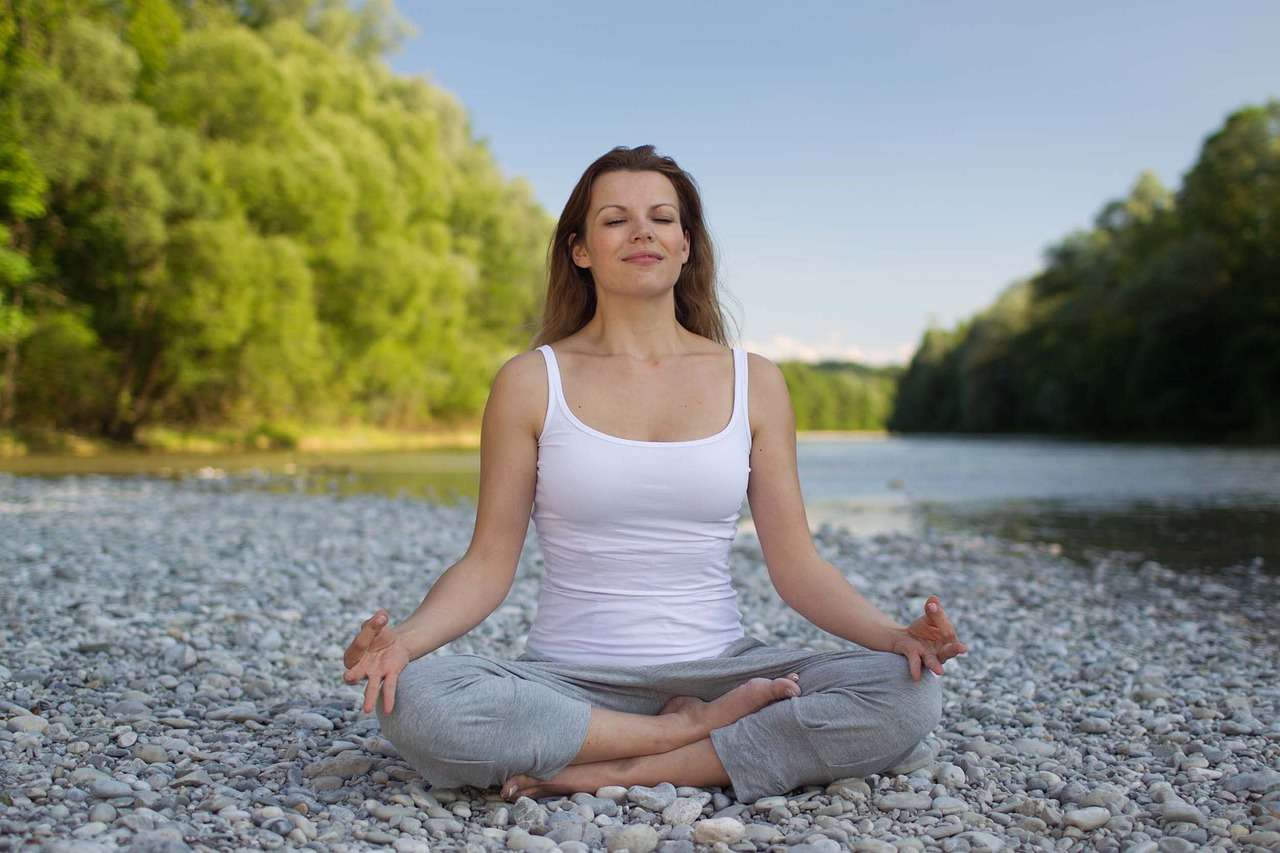Have you ever thought about the fitness routines that aid respiration? yeah! Imagine a life where each inhalation is a surge of energy, and every exhalation releases the physical and mental burdens we carry; a life where the rhythm of your breath becomes the symphony of your journey, moving you to new heights of liveliness and self-awareness; this is no mere fantasy; it’s the reality for individuals that take up a fitness routine that impacts respiration.
This blog post will discuss the importance of respiration, the benefits of fitness routines that aid respiration, and 5 Fitness routines that aid respiration. No longer will you see respiration as merely an involuntary process but a means to sustain life.
Importance of respiration
Respiration is vital for our existence and is essential to our general performance and well-being. Some of the importance of respiration include;
- Oxygenation and Energy Production: Respiration is the primary means through which our body receives oxygen, an essential element for cellular respiration. Oxygen is required for efficient energy production through adenosine triphosphate (ATP). Suppose we do not get a steady supply of oxygen. In that case, our cells will struggle to generate energy for all bodily functions, leading to fatigue and reduced performance.
- Waste Elimination: During respiration, carbon dioxide, a waste product of cellular metabolism, is expelled from the body. Removing this waste gas is essential, as excessive accumulation can lead to respiratory acidosis, affecting the body’s pH balance and causing various health issues.
- Vital Organ Function: Respiration directly influences the health of vital organs like the heart and brain. A well-oxygenated brain promotes clarity of thought, concentration, and memory retention, while a well-oxygenated heart strengthens its ability to pump blood efficiently while supporting general cardiovascular health.
- Enhanced Endurance and Physical Performance: For individuals and athletes who engage in physical activities, efficient respiration is essential. During exercise, more oxygen intake can improve endurance and reduce fatigue.
- Stress Reduction and Relaxation: Conscious breathing influences the autonomic nervous system, allowing us to shift from the “fight-or-flight” stress response to the calming “rest-and-digest” state. Deep breathing triggers the parasympathetic nervous system, thereby promoting relaxation, reducing stress, and boosting our emotional well-being
- Sleep Quality: Respiration also influences the quality of sleep. Practicing controlled breathing techniques before bedtime can promote relaxation and help us fight insomnia; this will better our sleep patterns and restorative rest.
- Mind-Body Connection: Focused breathwork fosters a deeper connection between mind and body. Mindful breathing exercises, like meditation and yoga, encourage self-awareness and regulate our emotions; this will help us manage stress, anxiety, and negative emotions.
- Immune System Support: Proper respiration contributes to a robust immune system. Oxygen-rich blood supports the body’s defense mechanisms; this helps us to battle infections and diseases more effectively.

5 Fitness routines that aid respiration
Below we will discuss some of the fitness routine that help the respiratory system. They are;
1. Cardiovascular Exercises
Cardiovascular exercises improve respiratory health by boosting heart and lung function. Some of these exercises include; Running or jogging, Cycling, and Jumping rope.
Running or jogging is a famous form of cardio that helps burn calories and increases lung capacity over time. Start slowly and gently raise your pace and distance to avoid overexertion.
Cycling is another fantastic activity for improving respiration. It is a low-impact activity that doesn’t put much stress on the joints and efficiently works the heart and lungs. Consider cycling outdoors for fresh air and scenery, or use a stationary bike indoors during inclement weather.
Jumping rope is a fun and effective means to enhance your cardiovascular health. It boosts your heart rate and encourages deep breathing, improving lung efficiency. Just a few minutes of jumping rope each day can make a significant difference in your respiratory capacity.
2. Yoga Practices
Yoga is notable for its positive impact on physical and mental well-being and its benefits on respiratory health. Practicing pranayama, or deep breathing exercises, helps expand the lungs and enhances their capacity. Simple breathing techniques like “Alternate Nostril Breathing” can easily be added into your daily routine.
Certain yoga poses specifically target respiratory muscles, helping to strengthen them over time. Poses like the “Cobra Pose” and the “Bridge Pose” work on the chest and upper back muscles, promoting better respiratory function. Also, yoga encourages relaxation and stress reduction, which can significantly improve breathing patterns.
3. Strength Training
Strength training is not just for building muscles; it can also be good for respiratory health. The diaphragm, a crucial muscle involved in breathing, can be strengthened through specific exercises. Engaging the core muscles during exercises like “Planks” and “Crunches” improves breath control and supports better respiratory mechanics.
Chest press and shoulder exercises can also contribute to stronger respiratory muscles, enhancing respiratory efficiency, letting you take deeper breaths, and improving overall lung function.
4. Swimming
Swimming is a superb full-body exercise that improves cardiovascular health and respiratory efficiency. Controlled breathing is vital in the water to maintain proper form and technique, encouraging the lungs to work more efficiently and strengthening the respiratory muscles.
Unlike high-impact exercises, swimming is gentle on the joints, making it an ideal choice for persons with respiratory conditions or joint-related issues. Water-based activities, such as aqua aerobics, can also provide excellent respiratory benefits for individuals looking for a low-impact alternative.
5. Pilates
Pilates is a comprehensive workout emphasizing core strength, flexibility, and breath control. The breathing techniques used in Pilates encourage deep, diaphragmatic breathing, enhancing lung capacity and promoting relaxation.
Various Pilates exercises target respiratory muscles and improve posture, leading to better breathing mechanics. Making Pilates part of your fitness routine can complement other practices, offering a well-rounded approach to respiratory health.
Benefits of fitness routines that aid respiration
The benefits include the following;
1. Aid in Recovery: Supervised respiratory exercises can help individuals who have experienced respiratory illnesses or surgeries during recovery. It gives strength to the muscles involved in breathing and facilitates lung function.
2. Prevention of Respiratory Issues: Regular respiratory exercises can help prevent specific respiratory issues, such as shallow breathing or weakened respiratory muscles, which can be a precursor to more severe conditions.
3. Improved Posture: Some respiratory exercises focus on improving posture and alignment. Good posture can promote lung expansion and prevent unnecessary strain on the respiratory muscles.
4. Better Oxygen Utilization: Regular respiratory exercises can help your body master using the available oxygen efficiently, increasing energy levels and improving performance in various physical activities.
5. Improved Lung Function: Respiratory exercises makes the muscles involved in breathing, such as the diaphragm and intercostal muscles, more robust, thereby improving the function and capacity of the lung.
6. Reduced Shortness of Breath: People with chronic obstructive pulmonary disease (COPD) or asthma may experience shortness of breath. Proper respiratory fitness exercises can help alleviate this symptom and improve respiratory comfort.
FAQS on fitness routines that aid respiration
1. Are there any precautions for individuals with respiratory issues?
Individuals with respiratory conditions should speak to their healthcare provider before commencing any new exercise routine. It’s important to find exercises appropriate for your situation and fitness level.
2. Is working with a fitness professional for respiratory fitness routines necessary?
While many basic respiratory exercises can be done independently, working with a fitness professional, such as a certified personal trainer or a respiratory therapist, can help design a customized routine that addresses your specific needs and goals.
3. Can respiratory fitness exercises help with stress and anxiety?
Yes, many respiratory activities focus on controlled and deep breathing, which can calm the nervous system and help reduce stress and anxiety.
4. Do I need any special equipment for respiratory fitness routines?
Generally, no special equipment is required. However, tools like a spirometer (to measure lung capacity) or a peak flow meter (to monitor airflow) may be recommended for specific exercises, especially for those with specific respiratory conditions.
Conclusion on fitness routines that aid respiration
Making your respiratory health a priority is essential; considering these five fitness routines that aid respiration can make a significant difference. These exercises help you breathe better and feel more energized daily. Remember to start slowly, listen to your body, and gradually increase the intensity to reap the maximum benefits from these fitness routines.

